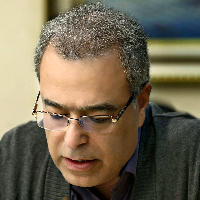Analyzing Conflict of Interest in Large-Scale Participatory Projects with Emphasis on the "Public Private People Partnership" Model (4P) (Case Study: Isfahan Jahannema Citadel Project)
Urban development is aimed at meeting public interest, but it sometimes leads to conflicts between the goals and accepted results of different groups and contributors. The significance of managing these conflicts as a methodological, practical approach is highlighted by the background of its impacts. Recent models of conflict management include public-private partnership in urban development (3P) and public-private-people partnership (partnership model) (4P). Public-private-people partnership is a new concept in urban planning, establishing new ways to improve the inclusion of various public-sector actors, private actors, residents, NGOs, and other civil-society actors in planning processes. The notion of 4P has arisen partly to respond to the criticism of public-private partnerships for insufficient inclusion of citizens, NGOs, and other actors in the civil society, and is used to refer to a variety of processes involving public actors, private actors, citizens, and NGOs in urban planning. For an understanding of 4Ps, it is useful to have a basic understanding of the background of public-private partnerships. In general, partnerships are urban development tools involving changes where strategic planning arises alongside more traditional land-use planning, and the roles of public- and private-sector actors, residents, and associations are reassessed and changed in a process that is perceived as a shift from government to governance. The concept of governance focuses on the interplay between the public sector and other actors in a situation where the public sector is no longer delivering all public goods and instead has the role of coordinating public actors at different levels and private actors and other partners. Central in the shift from government to governance is also the blending of public and private resources for delivery of public goods. In high-standard urban development projects, therefore, where common visions are created, and conflicting goals are managed, the strengths of each type of actor are utilized. The government provides the resources and a long-term development framework, and citizen initiatives organize and activate citizens to act, while companies provide the kinds of service that are demanded, and produce tax revenues for the government.This applied, perceptual research uses a qualitative method involving interpretation, and provides descriptions of the 3P and 4P aspects, addressing conflict management in the new 4P model using library documentation and a simple overview. For data collection in a case study of Jahan-Nama Citadel in the city of Isfahan, Iran, a semi-structured interview method was used to identify the problems with the project and to specify the conflicts between actors, including beneficiaries and stakeholders. Finally, the intergroup conflicts in the project were analyzed using the achievement matrix. The inter-organizational conflicts between the public and private sectors and the groups of people in the project were considered in three areas: land ownership (the land owners in the caravanserai), the type of land use proposed for the area (switching from green space to cultural and, ultimately, commercial uses), and the physical type of construction of the citadel, (regardless of the Naghshe Jahan Square skyline altitude). It was concluded that both the public and private sectors and different groups of people involved in the design and planning process have caused conflicts through their failure to recognize the actors in the Jahan-Nama Citadel project and to consider partnership in a wider sense (sharing the profits and losses and innovations of the plan), which has hindered achievement of the plan objectives.
- حق عضویت دریافتی صرف حمایت از نشریات عضو و نگهداری، تکمیل و توسعه مگیران میشود.
- پرداخت حق اشتراک و دانلود مقالات اجازه بازنشر آن در سایر رسانههای چاپی و دیجیتال را به کاربر نمیدهد.




